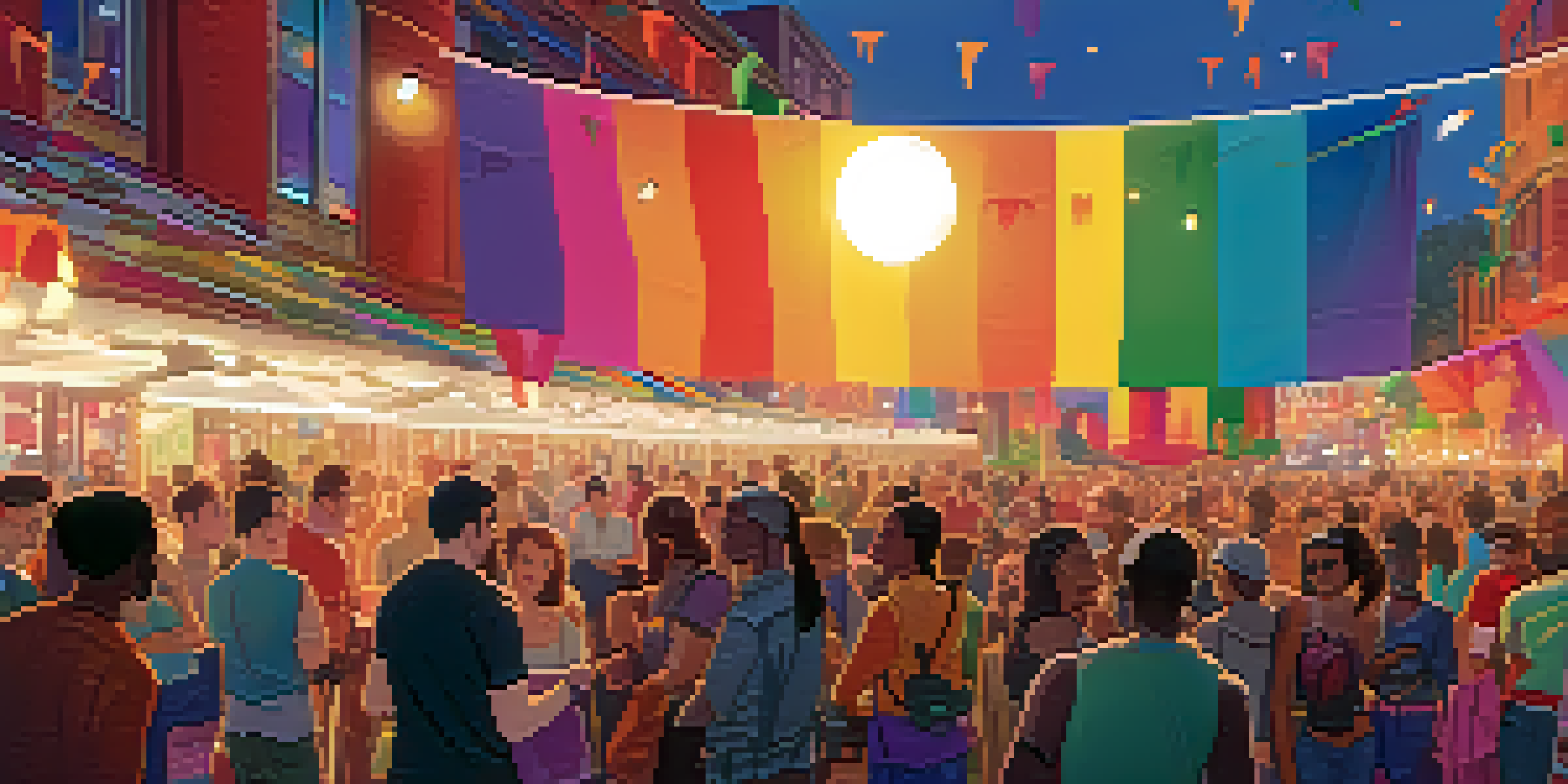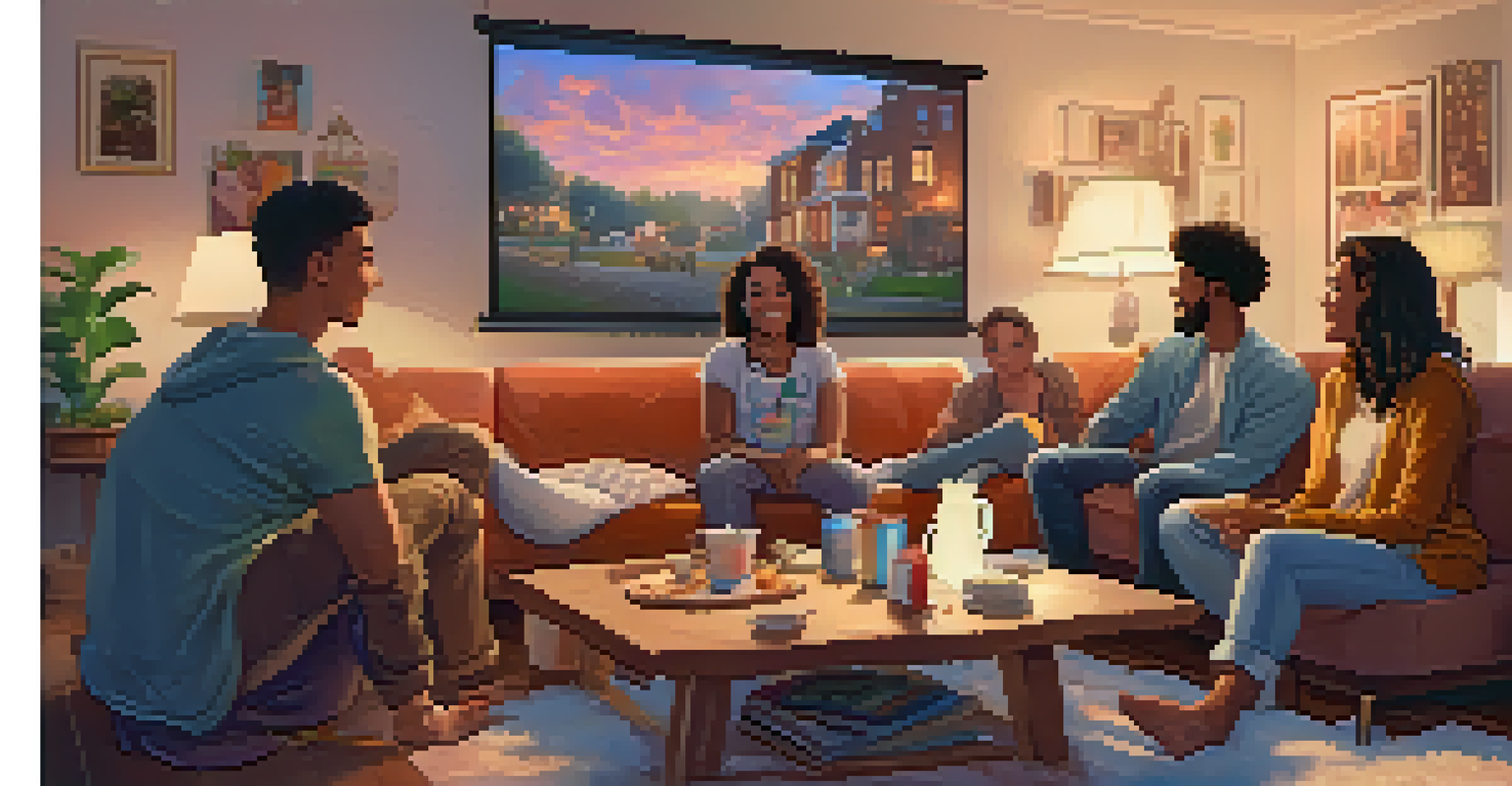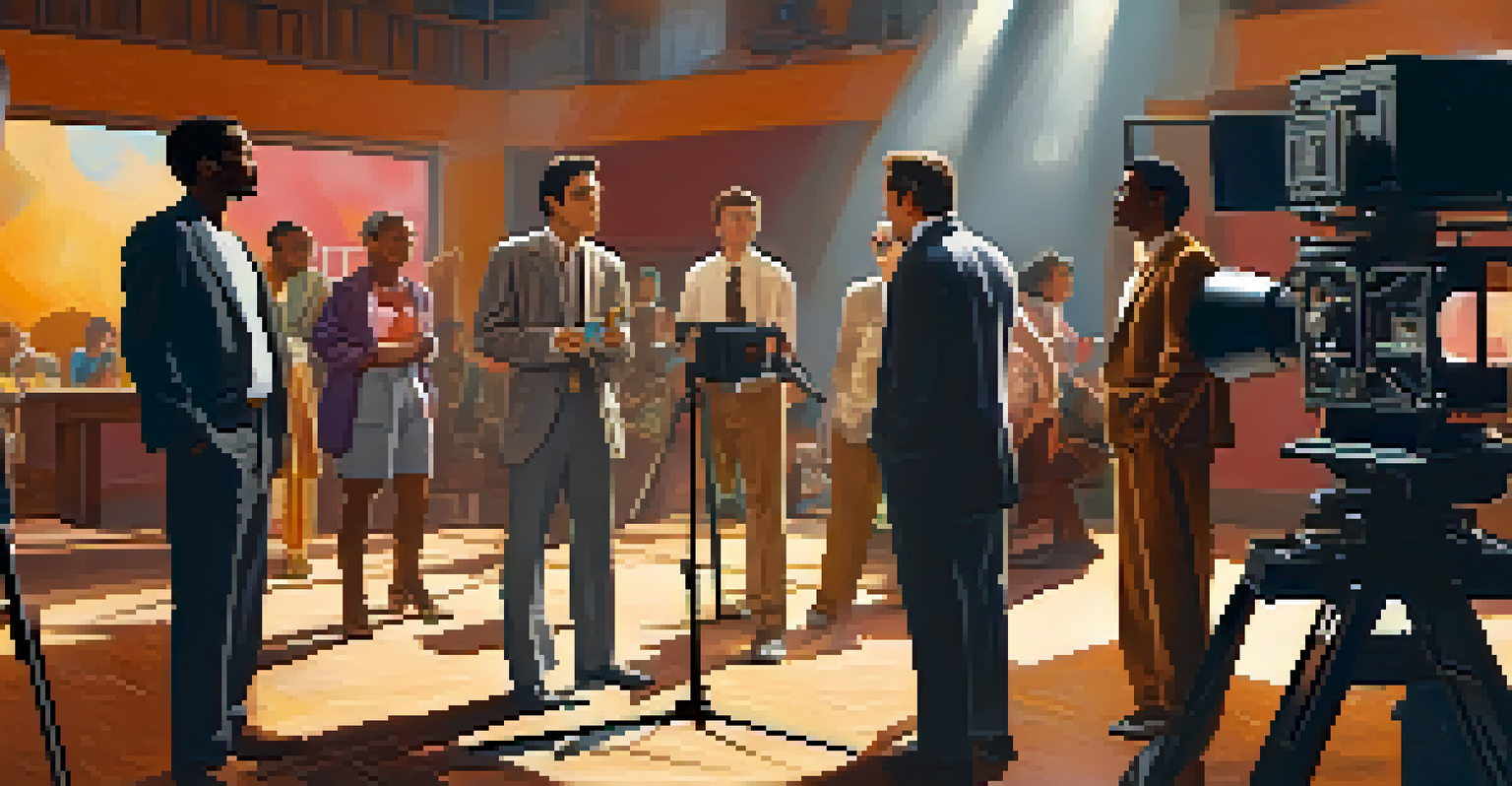How Hollywood Films Address LGBTQ+ Rights and Issues

The Evolution of LGBTQ+ Representation in Film
Over the decades, LGBTQ+ representation in Hollywood has evolved significantly. In the early days of cinema, characters often faced stereotypes or were hidden altogether. However, as societal attitudes shifted, filmmakers began to portray LGBTQ+ individuals more authentically and complexly. This evolution reflects a broader cultural acceptance and the ongoing fight for LGBTQ+ rights.
Cinema is a mirror by which we often see ourselves, and in that reflection, we can learn to embrace our differences.
For instance, films from the 1990s, like 'Paris is Burning,' offered a glimpse into the lives of drag queens and the ballroom culture, showcasing their struggles and triumphs. Such films not only entertained but educated audiences about LGBTQ+ issues. Today, we see a variety of stories, from romantic comedies to serious dramas, that feature LGBTQ+ characters and themes, making representation more mainstream.
This shift in representation is crucial as it affects how LGBTQ+ individuals are viewed in society and can foster empathy and understanding. As Hollywood continues to grow, it will be interesting to see how these narratives expand and evolve to embrace even more diverse experiences.
Addressing LGBTQ+ Rights Through Storytelling
Storytelling is a powerful medium for highlighting social issues, and Hollywood films have increasingly tackled LGBTQ+ rights. Films like 'Milk,' which chronicles the life of activist Harvey Milk, not only entertain but educate viewers about the struggles for equality. By centering real-life events and figures, these narratives can inspire activism and awareness.

Moreover, films like 'The Danish Girl' showcase the personal journeys of transgender individuals, shedding light on the challenges they face in society. These stories resonate with audiences and encourage conversations about rights, acceptance, and understanding. They remind us that behind every statistic or headline, there are real people with complex stories.
LGBTQ+ Representation Has Evolved
Hollywood's portrayal of LGBTQ+ characters has transformed from stereotypes to more authentic and complex narratives over the decades.
When filmmakers prioritize authenticity in their storytelling, they foster a connection with the audience. This connection can lead to increased support for LGBTQ+ rights and a more informed society, proving that cinema can be a catalyst for change.
The Role of Film Festivals in Promoting LGBTQ+ Cinema
Film festivals play a vital role in elevating LGBTQ+ stories and voices. Events like the Frameline Film Festival and Outfest provide platforms for filmmakers to showcase their work, often focusing on narratives that mainstream cinema may overlook. These festivals celebrate diversity and offer a space for LGBTQ+ filmmakers to share their experiences and perspectives.
The power of storytelling is that it can create empathy and understanding, bridging the gap between different lives and experiences.
Attending these festivals not only allows audiences to enjoy unique films but also creates opportunities for dialogue around LGBTQ+ issues. The discussions that arise can challenge preconceived notions and foster a greater appreciation for diverse narratives. Additionally, awards and recognition at these festivals can help propel LGBTQ+ films into wider distribution.
As more festivals prioritize inclusivity and diversity, the hope is that the visibility of LGBTQ+ stories will continue to grow, influencing how they are portrayed in Hollywood. This ripple effect could lead to more nuanced and authentic representations in mainstream cinema.
The Impact of Streaming Services on LGBTQ+ Content
The rise of streaming services has transformed how audiences consume films, including LGBTQ+ content. Platforms like Netflix, Hulu, and Amazon Prime have made it easier for diverse stories to reach wider audiences. With dedicated sections for LGBTQ+ films and shows, these services showcase a variety of narratives that might not have received attention in traditional theaters.
For example, series like 'Pose' and films like 'The Half of It' highlight LGBTQ+ experiences while also providing representation behind the camera. This increased visibility allows for more authentic storytelling, as creators from the LGBTQ+ community share their perspectives. Moreover, the global reach of streaming services means that these stories can resonate with viewers from different backgrounds.
Storytelling Drives LGBTQ+ Advocacy
Films that center LGBTQ+ narratives not only entertain but also educate audiences about rights and acceptance, inspiring activism.
However, while streaming has expanded access, it also presents challenges, such as the risk of content being overlooked amidst a vast library. Nonetheless, the potential for diverse LGBTQ+ narratives to flourish in this space is significant, encouraging creators to take risks and explore new themes.
Challenges in LGBTQ+ Representation in Hollywood
Despite progress, Hollywood still faces challenges in accurately representing LGBTQ+ individuals. One major issue is the tendency to rely on stereotypes or tokenism, where LGBTQ+ characters are included merely to check a box rather than to enrich the story. This can lead to one-dimensional portrayals that fail to capture the complexity of real lives.
Additionally, there are ongoing debates about who gets to tell these stories. When non-LGBTQ+ creators tell LGBTQ+ narratives, it can lead to misrepresentation and inauthenticity. It's essential for Hollywood to prioritize hiring LGBTQ+ writers, directors, and actors to ensure that stories are told with genuine understanding and respect.
Addressing these challenges is crucial for the future of LGBTQ+ representation in film. By fostering an inclusive environment, Hollywood can create richer, more authentic narratives that resonate with audiences and reflect the diverse tapestry of human experiences.
The Power of Queer Cinema in Shaping Culture
Queer cinema has a unique ability to challenge societal norms and influence culture. Films that center LGBTQ+ experiences can spark conversations about identity, love, and acceptance, pushing audiences to reflect on their own beliefs. Classics like 'Brokeback Mountain' and 'Call Me by Your Name' not only captivated audiences but also opened doors for discussions on same-sex love and relationships.
These films often serve as a mirror to society, revealing both progress and the work that still needs to be done. As viewers empathize with characters and their journeys, they may find themselves more open to understanding LGBTQ+ issues. This cultural shift is essential for fostering acceptance and encouraging advocacy for LGBTQ+ rights.
Film Festivals Elevate LGBTQ+ Voices
Events like Frameline and Outfest provide crucial platforms for LGBTQ+ filmmakers, fostering dialogue and enhancing visibility for diverse stories.
Ultimately, queer cinema can pave the way for a more inclusive society. By celebrating love in all its forms, these films contribute to a growing acceptance of diversity, challenging outdated perceptions and inspiring future generations.
The Future of LGBTQ+ Representation in Hollywood
As we look ahead, the future of LGBTQ+ representation in Hollywood appears promising yet challenging. With the growing demand for diverse stories, filmmakers are increasingly recognizing the importance of inclusion both in front of and behind the camera. This shift encourages the exploration of new narratives that reflect the realities of LGBTQ+ lives.
Moreover, the rise of social media has empowered audiences to voice their expectations for authentic representation. Viewers now actively engage with creators, demanding more complex characters and stories that reflect their experiences. This level of engagement can influence the types of films and shows that get produced, ensuring a broader range of stories is told.

However, ongoing advocacy is essential to ensure that progress continues. By supporting LGBTQ+ creators and promoting diverse narratives, we can help shape a future where Hollywood embraces all facets of human experience, ultimately leading to a richer cinematic landscape.